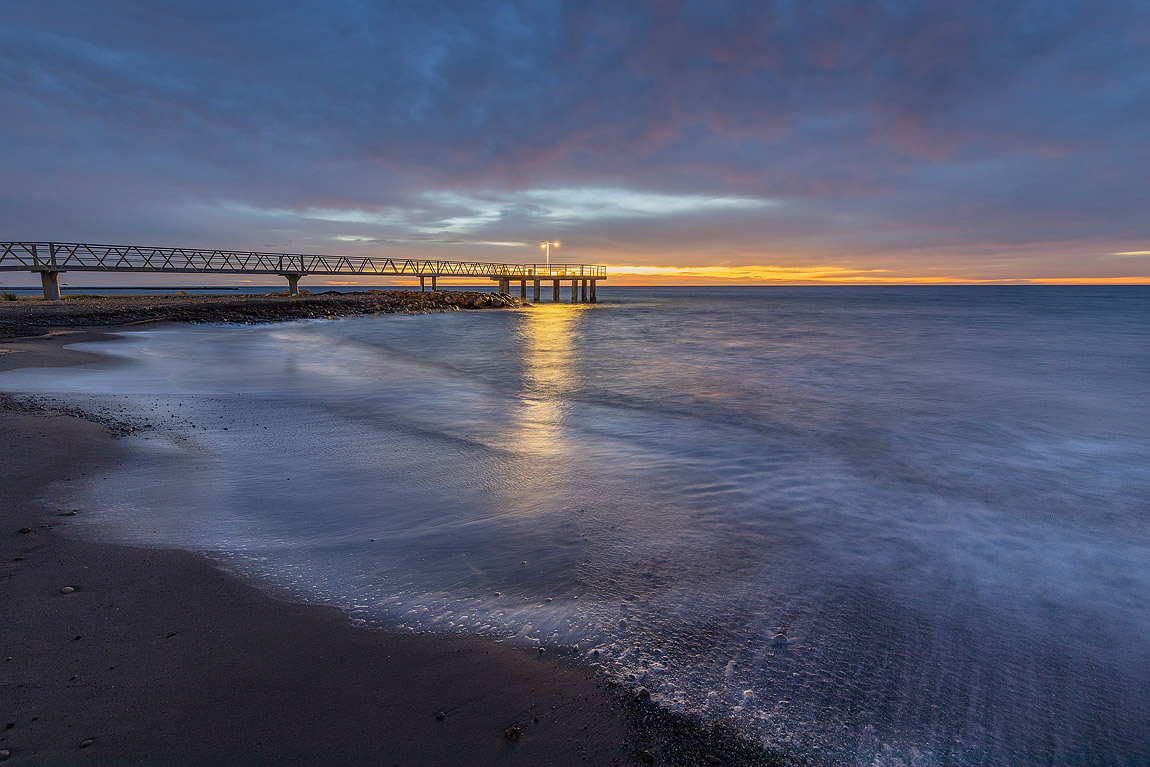Curved lines in photography can greatly enhance composition. These lines convey precise movement and flow. They are found everywhere in nature, often implicitly in flowers, animals, the human body and, of course, landscapes. As important compositional elements, curved lines provide rhythm, dynamism and direction in photography.
Photographers use curves to guide the viewer's eye through the image, creating a story and a sense of depth within the image. A straight line serves a similar purpose. However, it does so more directly, resulting in a quicker interpretation of the image. A curved line, on the other hand, allows the eye to travel at a leisurely pace, usually making the journey through the image more enjoyable.
In addition, the curved line in a photograph conveys a sense of comfort and beauty. These lines tend to be elegant, which, together with their smoothness, creates a sense of relaxation and comfort in the viewer. Although it is not always easy to find curves in a landscape, a photograph that presents one or more harmonious curved lines can really captivate the viewer.
In fact, curved lines in photography offer a unique way to enhance composition and engage the viewer. They create a sense of movement and rhythm that straight lines often can't match. In nature, these curves can be found in a variety of forms - from the gentle arcs of waves to the graceful contours of flowers.
In landscape photography, the interplay of light and shadow is crucial. The scene I captured shows how the soft early morning light accentuates the wet sand, creating a natural curved line of sight to the pier. This approach not only directs the viewer's eye but also evokes a sense of tranquillity and beauty characteristic of those early hours by the sea.
The vastness and colour of the Mediterranean draws me to its shores. The Community of Valencia in Spain has always been a source of inspiration for me. One of the most attractive aspects of seascapes is the magnificent range of blues and the contrast with the golden sand of a beach. This becomes very pronounced in the early hours of the autumn months.
The blue tonality played a crucial role in this photograph as it was taken approximately twenty-three minutes before sunrise. Blue Hour photography captures the magical period just before sunrise and after sunset when the sky takes on deep blues and purples. The blue hour lasted between twenty and thirty minutes, so I was determined to get there early and not miss this magical time. Once there, I quickly found the spot I had planned for the previous morning. What caught my eye in this composition was the reflection of light in the water from the lamppost on the pier. I knew the light would go out before sunrise. Secondly, I exposed for the water washing the sand on the shore. I needed to get the right effect to make the seawater look as painterly as possible, so timing and aperture speed were crucial.
The interplay of colour - the deep blues, the reflections and the textures of the water and sand - is captivating. Timing was so important; that fleeting moment before sunrise can transform a scene and make it so much more compelling.
Capturing the precise waves added a layer of movement and life to the photograph, enhancing this dynamic essence. The curvature of the coastline can lead the viewer's eye through the image, making it feel like a journey. What I enjoy about seascape photography is immersing myself in the moment, allowing the natural rhythm of the waves to guide my shots. This patient observation often results in truly compelling images.
The thoughtful use of curved lines can transform an ordinary seascape into an extraordinary visual experience, allowing the viewer to feel a connection with the beauty of the coast. The ability to recognise and exploit these elements is the key to creating memorable photographs. Timing is everything in photography, and careful planning usually pays off.


